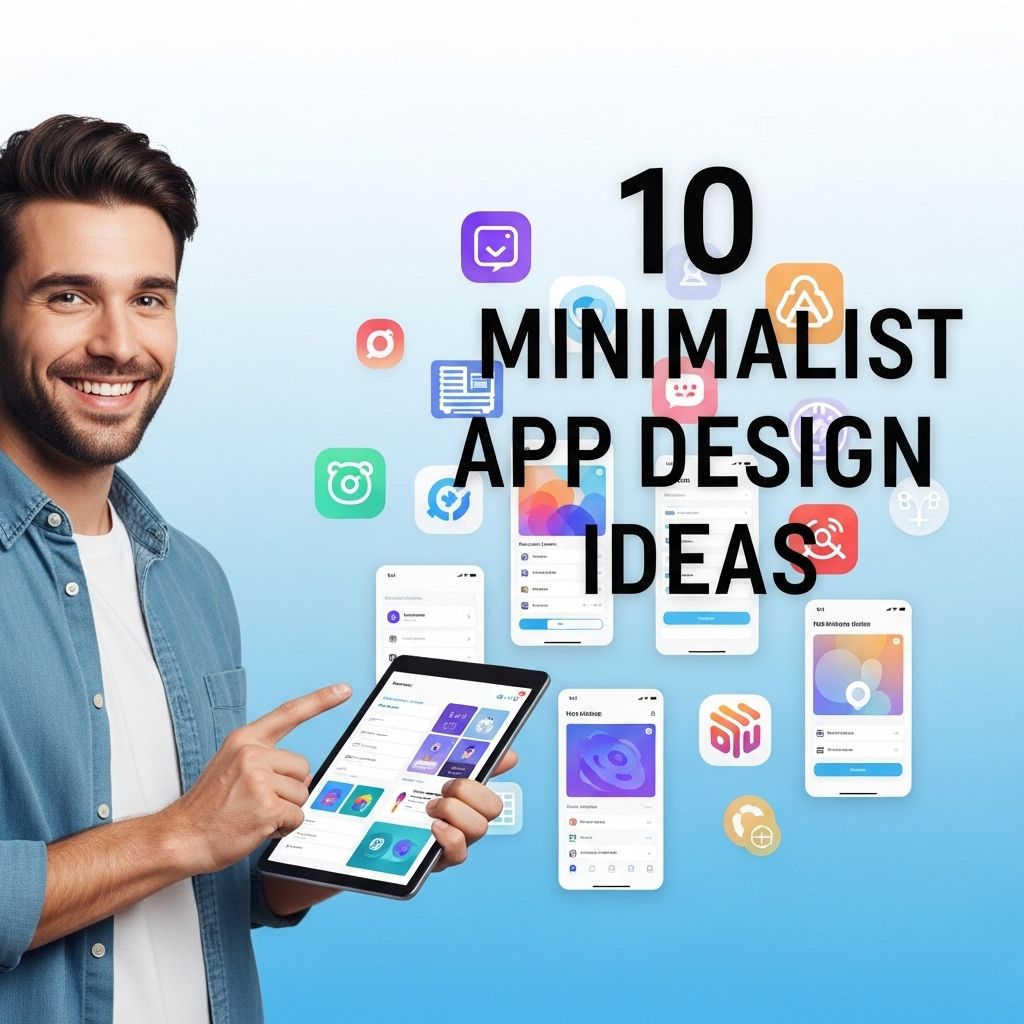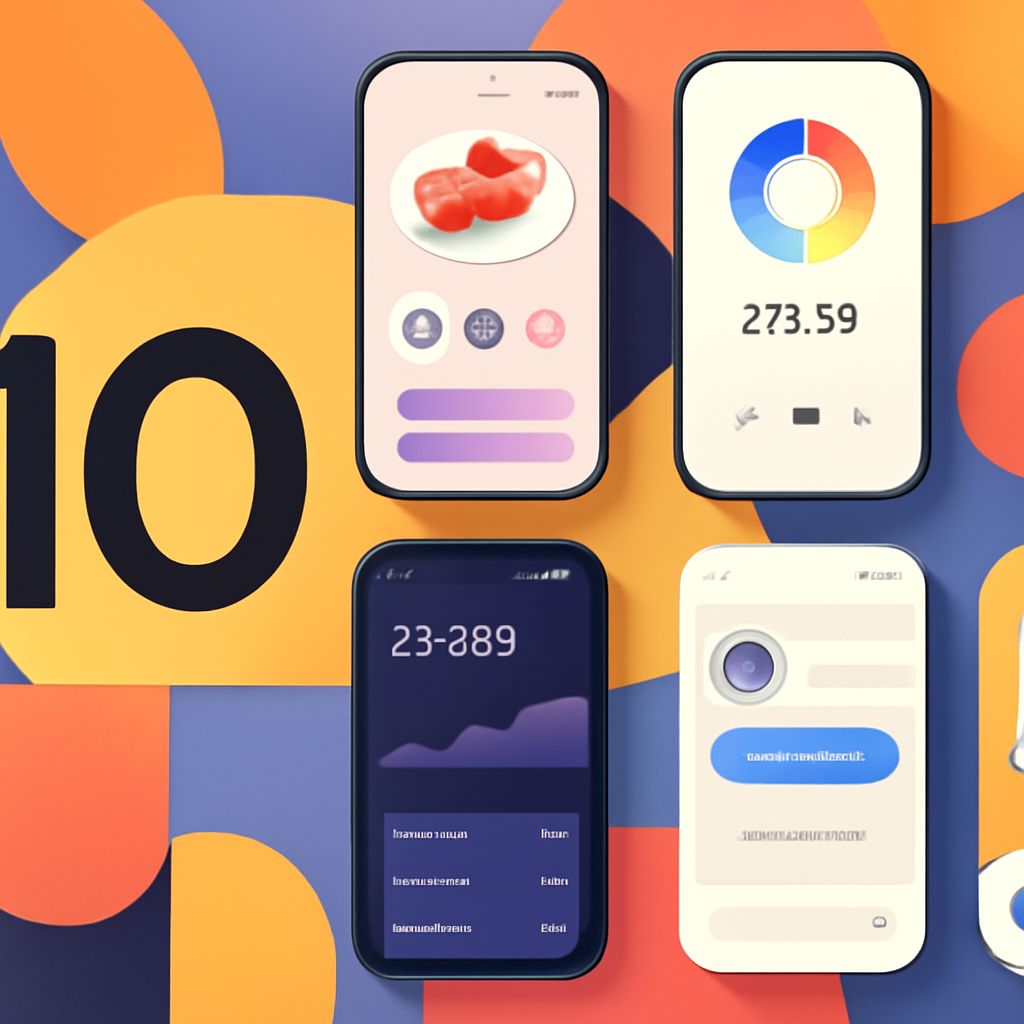In today’s fast-paced digital world, where users are bombarded with information, minimalist app design has emerged as a refreshing antidote to clutter. By stripping away unnecessary elements and focusing on the essentials, minimalist design enhances user experience, making apps intuitive and aesthetically pleasing. This article explores ten innovative minimalist app design ideas that can inspire developers and designers to create functional yet elegant applications.
The Essence of Minimalism
Minimalist design is about more than just aesthetics; it embodies a philosophy that prioritizes functionality, simplicity, and user-centered design. Key principles include:
- Clarity: Removing distractions helps users focus on what matters.
- Functionality: Each element should serve a purpose.
- Intuitiveness: Navigation should be straightforward and user-friendly.
- Visual Harmony: A cohesive color palette and typography enhance the overall experience.
1. Focus on Typography
Typography plays a crucial role in minimalist design. Using clean, sans-serif fonts can enhance readability and create a modern look. Consider the following:
- Utilizing a limited number of font sizes and weights.
- Emphasizing key information with bold text or contrasting colors.
- Incorporating whitespace to prevent overcrowding.
Example
An app that focuses on reading, like an eBook reader, can leverage large, legible fonts against a simple background to create an immersive reading experience.
2. Monochromatic Color Schemes
Minimalist apps often utilize a monochromatic color scheme to create a cohesive look. Here’s how to effectively use this design choice:
- Select a primary color and varying shades to add depth and contrast.
- Use white or negative space for balance.
- Introduce one accent color to draw attention to important features.
Pros and Cons of Monochromatic Designs
| Pros | Cons |
|---|---|
| Creates visual coherence | Can feel flat if not executed well |
| Easy on the eyes | Limited contrast may confuse some users |
| Emphasizes simplicity | May lack personality |
3. Simplified Navigation
Effective navigation is vital for user satisfaction. Minimalist apps should focus on simplicity:
- Implement a bottom navigation bar for essential functions.
- Use gestures for advanced actions, reducing on-screen clutter.
- Limit the number of menu items to streamline choices.
Case Study
Apps like Spotify use minimal navigation bars that allow users to easily switch between playlists, podcasts, and their library without overwhelming visual elements.
4. Large, Eye-Catching Icons
Icons serve as visual tools that enhance understanding without requiring text. For minimalist designs:
- Use large, simple icons that communicate their purpose clearly.
- Ensure icons are easily tappable, improving usability on touch devices.
- Maintain a uniform style across all icons.
Design Tips
Consider using vector graphics for scalability and adjust the opacity for inactive states, which keeps the interface clean.
5. Minimalist User Onboarding
Onboarding processes can often be convoluted. For a minimalist approach, consider:
- Short, concise tutorials that highlight core features.
- Using tooltips that appear only when a user engages with a feature.
- Incorporating progress indicators without overwhelming users.
6. Focus on Content
In minimalist design, content is king. Here are strategies to elevate content:
- Utilize full-screen layouts to immerse users in content.
- Limit the number of content types displayed simultaneously.
- Incorporate video or audio elements for richer experiences while maintaining simplicity.
Example
Apps like Medium utilize a clean interface that places emphasis on articles, allowing readers to focus solely on the written word.
7. Subtle Animations
Animations can add a layer of interactivity without cluttering the interface. Consider these tips:
- Use micro-interactions for feedback on user actions, like button presses.
- Incorporate smooth transitions to enhance navigation.
- Avoid excessive animations that distract from the main content.
8. Functional Minimalism
Functional minimalism centers on designing apps that fulfill user needs efficiently. Key strategies include:
- Prioritizing features based on user feedback and behavior analysis.
- Implementing A/B testing to refine functionalities based on usability.
- Removing non-essential features to enhance performance and speed.
9. Intuitive Gesture Controls
Gesture-based controls can simplify interactions significantly. Here are some considerations:
- Incorporate swiping to navigate between screens.
- Use pinching or long-pressing for advanced features.
- Ensure gestures are intuitive and provide feedback to the user.
10. Accessibility in Minimalism
Creating an app that is accessible to all users is paramount. Implement these practices:
- Use sufficient color contrast to assist users with visual impairments.
- Provide text alternatives for images and icons.
- Design with keyboard navigation in mind.
By considering accessibility, you create an inclusive experience that resonates with a broader audience.
Conclusion
The appeal of minimalist app design lies in its ability to merge aesthetics with functionality. By focusing on clarity, usability, and content, designers can create apps that stand out in a saturated market. The ten ideas discussed not only provide a foundation for creating minimalist applications but also inspire innovation within the realm of mobile and web design. Whether you’re designing a new app or refining an existing one, the principles of minimalist design can elevate your work and enhance user satisfaction.
FAQ
What are the key principles of minimalist app design?
The key principles of minimalist app design include simplicity, functionality, and an uncluttered interface that prioritizes user experience.
How can I achieve a minimalist design for my app?
Achieving a minimalist design involves using a limited color palette, maximizing white space, simplifying navigation, and focusing on essential features.
What are some examples of successful minimalist app designs?
Successful minimalist app designs include popular applications like Instagram, Google Keep, and Pocket, which emphasize clean layouts and intuitive user interfaces.
Why is minimalism important in app design?
Minimalism is important in app design as it enhances usability, reduces cognitive load, and helps users focus on the core functions of the application.
Can minimalist design be applied to all types of apps?
Yes, minimalist design can be applied to various types of apps, but it is particularly effective for content-driven and productivity-focused applications.




